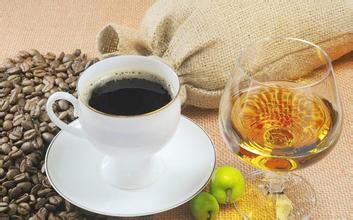Jamaica Blue Mountain Coffee Beans-Blue Mountain Coffee Beans-Jamaica Blue Mountain Coffee Beans-Jamaica Blue Mountain Coffee
Sir Nicholas Strauss, governor of Jamaica, brought the first coffee seedlings to Jamaica from Martinique. By 1790, some coffee farmers among the refugees in exile from Haiti had settled in the Blue Mountains and brought coffee-growing technology here. In 1838, Jamaica abolished slavery, allowed freed slaves to cultivate their own land, and freed slaves moved to the mountains to grow coffee and exported it to Britain. These coffees became more and more popular in British society.
The Jamaican government gives a very strict definition of Blue Mountain Coffee: it must be grown in the coffee growing area of the Blue Mountain defined by the Jamaica Coffee Industry Council (The Coffee Industry Board) at an altitude of 3000-5000 feet above sea level, processed by government-certified roasting and processing enterprises and inspected by the Coffee Industry Committee in order to be a real "Blue Mountain Coffee". The Jamaican Coffee Industry Committee (CIB) was established by the Jamaican government in 1950. The main function of the Coffee Industry Committee is to regulate and guide the development of Jamaican coffee industry, ensure coffee quality, formulate blue mountain coffee industry standards, delineate blue mountain coffee planting areas, and test the quality of exported blue mountain coffee products. Each batch of blue mountain coffee exported by Jamaica must be inspected by the coffee industry committee and certified by the international caffeine organization before it is allowed to be exported. Only then can it be called Jamaican blue mountain coffee.
Coffee beans-specifications
a. Washing / non-washing
Washing type: in the sink, after rubbing with water and utensils, the pulp and colloid are removed and dried, which is called washing coffee bean with uniform quality.
Non-washing type: after the sun is naturally dried, the pulp and peel is removed by a sheller, and its quality is unstable.
b. Flat beans / round beans
The fruit of coffee consists of two oval seeds opposite each other. The connecting side of each other is a flat joint, which is called flat bean. But there is also a round seed called a round bean, which tastes no different. Ripe and red coffee cherries have multiple structures. In the middle is the predecessor of the coffee bean, the light green seed.
Generally speaking, the fruit of coffee is made up of two oval seeds opposite each other. The side that connects with each other is a flat joint, so it is called flat bean. But some are made up of a round seed, and its taste is no different.
c. The size of coffee beans
Filter number (mesh no.)
Pingdou 2019, 18, 17 quasi-large, 16 ordinary, 15 medium, 14 small, 13-12 extra-small
Green beans are 13-12, 11-big, 10-normal, 9-medium and 8-small.
d. Altitude
According to the elevation of the cultivated land, it can be divided into three, four, seven and other grades. Generally speaking, the quality of highland beans is better than that of lowland beans, and the price is higher because of the increase in freight.
The grade name is above sea level (meter) 1 special grade beans above 1.500, 2 high grade beans 1.200 × 1.500, 3 medium beans 1.000 × 1.200, 4 grade water washed beans 900000 × 1.000, 5 high grade water washed beans 760mm 900,6 special excellent water washed beans 6100760, 7 excellent water washed beans ~ 610
e. Quality
According to the statistical method, the type and quantity of dopants contained in a certain amount of samples are converted into percentage "defect number", and the basis for determining the quality class is that the smaller the defect number is, the higher the quality is.
f. Taste
Brazil, Haiti, Kenya, say and other countries all have their own taste testing methods, which can be exported only after taste testing.
g. From harvest to shipment
After the fruit is harvested, the outer skin, pulp, endocarp and silver skin should be removed before shipping. There are two kinds of methods: drying (also known as natural or non-washing) and washing. The drying method is relatively simple.
First of all, spread the freshly harvested fruit on the exposure field for a week or two until the fruit crackles and dries naturally.
After that, the dried pulp, endocarp and silver peel are removed by a sheller.
Coffee beans refined in this way are slightly sour and slightly bitter. Almost all coffee beans produced in Brazil, Ethiopia, Yemen and other places are obtained in this way. The disadvantage of this method is that it is easily affected by weather and is easy to be mixed with defective beans and other impurities. Therefore, it must be carefully screened.
Another way is to wash the fruit, in which the fruit to be harvested is put into a flowing trough. After the floating fruit is removed, the skin and flesh are removed by a pulp remover. Then put it in the sink to remove the emerging pulp. After that, move into the fermentation tank, soak for half a day to a day, and then dissolve the gum on the surface of the fermented coffee beans. After washing with water, drying it for a few days, drying it with a machine, and finally removing the endocarp with a sheller, it becomes a raw coffee bean that can be used as a commercial product.
Water-washed coffee beans have more beautiful color and less impurities. Colombia, Mexico, Guatemala and other countries adopt this method for about 70% of their output. Sometimes in the fermentation process, if not handled properly, it may give off fermentation odor and its unique sour taste, but if handled properly, all kinds of beans can give off their unique coffee aroma.

Important Notice :
前街咖啡 FrontStreet Coffee has moved to new addredd:
FrontStreet Coffee Address: 315,Donghua East Road,GuangZhou
Tel:020 38364473
- Prev

Introduction of high-quality coffee trees in Bolivia with slow growth and sufficient compactness.
Bolivia's high-quality estates, very high altitude, perennial low temperature environment, so that coffee fruit growth is slow, tight enough, aroma is also charming, floral aroma is obvious, such as careful handling, cherries with the same maturity, often have a clean and meticulous high-end taste, this elegant vanilla and honey aromas are very attractive, this champion bean has a variety of floral aromas, vanilla and sweet very long-lasting. To
- Next

Ecuadorian coffee beans with unique taste San Cristobal region
Diego Vega, Chief Commercial Officer of the Ecuadorian Export and Investment Promotion Agency, and Erika Wang, CEO of the Welcome Coffee Institute, attended the event and introduced the public to Ecuador's diverse coffee-producing regions, such as Loja, Imbabura, Zamora, Vilcabamba and Galpagos. Ecuador
Related
- Does Rose Summer choose Blue, Green or Red? Detailed explanation of Rose Summer Coffee plots and Classification in Panamanian Jade Manor
- What is the difference between the origin, producing area, processing plant, cooperative and manor of coffee beans?
- How fine does the espresso powder fit? how to grind the espresso?
- Sca coffee roasting degree color card coffee roasting degree 8 roasting color values what do you mean?
- The practice of lattes: how to make lattes at home
- Introduction to Indonesian Fine Coffee beans-- Java Coffee producing area of Indonesian Arabica Coffee
- How much will the flavor of light and medium roasted rose summer be expressed? What baking level is rose summer suitable for?
- Introduction to the characteristics of washing, sun-drying or wet-planing coffee commonly used in Mantenin, Indonesia
- Price characteristics of Arabica Coffee Bean Starbucks introduction to Manning Coffee Bean Taste producing area Variety Manor
- What is the authentic Yega flavor? What are the flavor characteristics of the really excellent Yejasuffi coffee beans?

